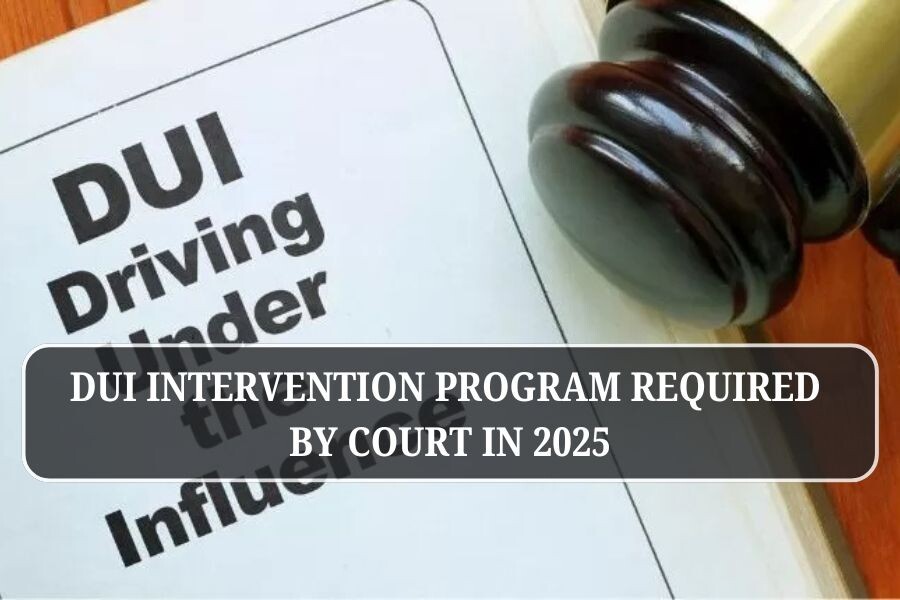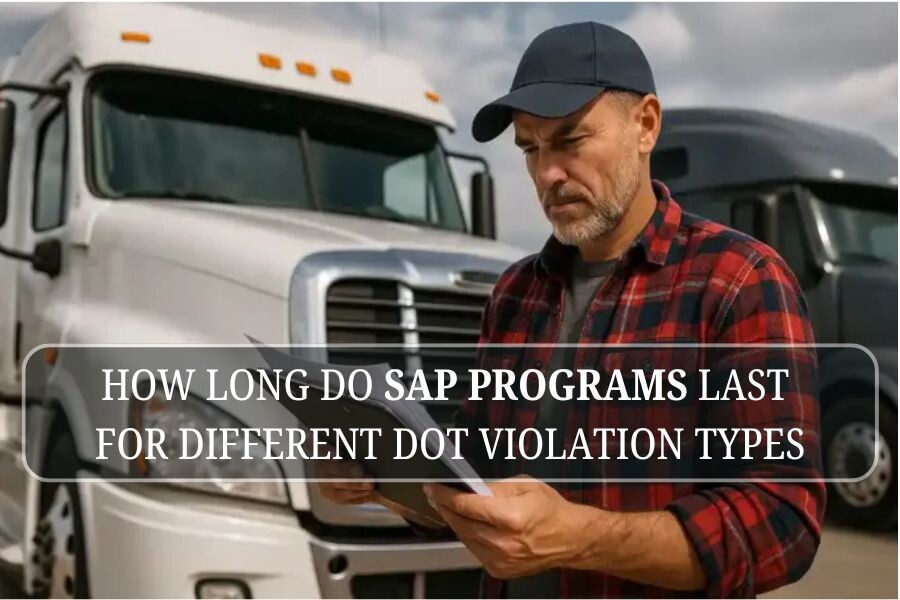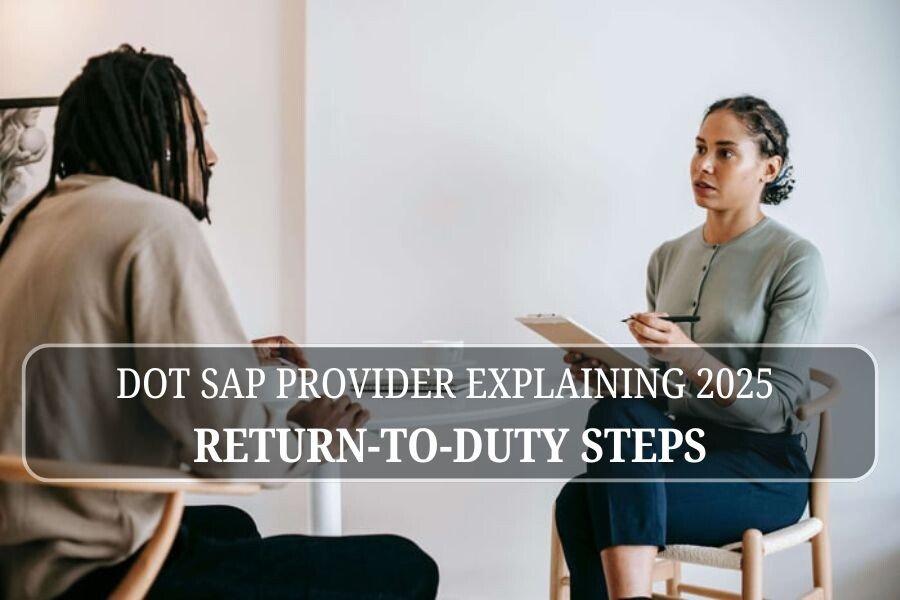Time is everything — especially if you’re a CDL driver who needs to get back to work. Whether you’re dealing with a DOT drug or alcohol violation or have been referred for a SAP assessment DOT, you may be asking: “What’s the fastest way to complete my DOT SAP Program in 2025?”
Here’s your step-by-step guide to completing the fast DOT SAP Program the right way — legally, quickly, and affordably.
Step 1: Schedule Your DOT SAP Evaluation ASAP
The first step in the process is the DOT SAP evaluation 2025, where a qualified Substance Abuse Professional assesses your situation. Many providers now offer same-day virtual appointments, making it easier to start the process quickly.
Step 2: Choose a Telehealth SAP for Faster Service
In 2025, telehealth SAP evaluations are 100% legal and accepted by the FMCSA Clearinghouse. This saves you from waiting for in-person sessions and allows for rapid progress through your DOT return-to-duty process.
✅ Benefits of telehealth for SAP assessment DOT:
No travel delays
Same-day or next-day appointments
Immediate report submissions to the Clearinghouse
Step 3: Complete Your Recommended Treatment or Education Quickly
Once the SAP recommends treatment or education, complete it through an approved provider. Many programs offer intensive short courses, which help you complete requirements in days rather than weeks — without sacrificing compliance.
📌 Important: Always check that the program you choose meets the SAP’s written recommendations and DOT rules.
Step 4: Schedule Your Follow-Up SAP Evaluation Immediately
Once treatment is complete, you’ll need a follow-up SAP evaluation to confirm your compliance. A fast provider can schedule your follow-up the same week and submit clearance data to the FMCSA Clearinghouse within 24 hours.
🔗Return-to-Duty Steps After SAP
Step 5: Pass Your DOT Return-to-Duty Test
The final step is a negative Return-to-Duty drug or alcohol test. Only after this will you be officially cleared to resume safety-sensitive duties.
Many drivers can complete the full SAP process, including evaluation, treatment, follow-up, and testing, in as little as 10–14 days, depending on the provider’s speed and your availability.
Fast DOT SAP Program Completion Benefits
Faster return to CDL driving
Avoid extended unemployment
Stay in compliance with DOT regulations
Reduce the risk of missing employer deadlines
Start Fast, Stay Legal — Get Back to Work Sooner
If you’re ready to begin your fast DOT SAP Program, AACS Counseling offers:
Same-day SAP assessments
DOT-compliant telehealth services
Affordable, flat-rate pricing
SAP evaluation reports submitted fast
Support throughout the Return-to-Duty process
👉 Click here to schedule your SAP assessment today or call us directly.











